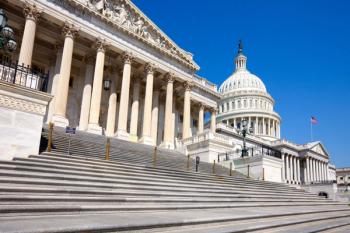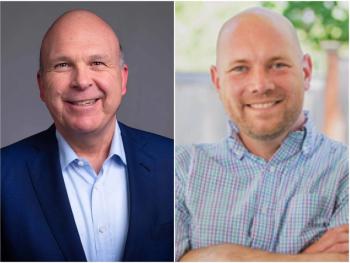
Nonprofit hospitals tout community benefits, but lawmakers raise questions
A new EY study argues the benefits far exceed the tax breaks, but some members of Congress have expressed concerns that hospitals aren’t doing enough.
Nonprofit hospitals are not only meeting their obligations to provide benefits that come with tax breaks, but they are also going further to support their communities, a new analysis says.
Hospitals provided $11 in community benefits for every $1 in federal tax exemptions in 2022, according to
Tax-exempt hospitals delivered $149 billion in benefits to their communities, dwarfing the $13.2 billion in federal tax breaks to nonprofit hospitals, the report states. EY developed its analysis based on data from Internal Revenue Service records.
The report comes as members of Congress have raised more questions about whether hospitals and health systems are fulfilling their community benefit requirements as tax-exempt entities.
Hospitals argue they are doing so and more. Even factoring in state and local tax breaks, the EY analysis suggests community benefits surpassed the exemptions. EY estimated state and local tax benefits to nonprofit hospitals were $41.1 billion, so adding federal tax breaks provides a total of $54.4 billion.
With benefits of $149 billion, “the community benefit provided by nonprofit hospitals is three times greater than the value of their total tax revenue forgone,” the report states.
Rick Pollack, president and CEO of the American Hospital Association, said the study underscores the enormous contributions hospitals are making in the communities they serve.
“Hospitals are the heartbeat of healthier communities,” Pollack said in a statement accompanying the report. “This EY report shows they’re not only saving lives 24/7 — they’re also pioneering programs that inspire hope and create a stronger, healthier future for all.”
Hospitals have long argued that the tax exemptions they receive pale in comparison to the services they provide to communities, including patient care, health research, programs tackling problems such as food insecurity and other challenges that can affect public health.
Growing scrutiny
Some members of Congress have expressed growing skepticism that nonprofit hospitals are meeting the obligations of their tax exemptions.
The House Ways and Means Committee held a hearing in September examining the community benefits provided by nonprofit hospitals, and some lawmakers said they wanted better data on community benefits. Some also offered direct criticism about the ways nonprofit hospitals use their money.
Rep. Jason Smith, a Missouri Republican who is the chairman of the committee, said at the hearing that too many hospitals are falling short of meeting their obligations as tax-exempt entities.
“The generous benefits bestowed on tax-exempt hospitals come with an obligation on their part to provide charitable benefits to their communities. Yet, we have data showing that from 2020 to 2022, over half of such hospitals got more in tax benefits than they invested in their community,” Smith said at the September hearing.
Smith pointed to a
Citing a gap of over $10 billion, Smith asked, “What sort of excuses do these tax-exempt hospitals make to justify the massive deficit between the charity care they provide and the tax benefits that they receive? How has this imbalance been able to grow so substantially in recent years? What should be done to flip the equation here?”
Rep. Beth Van Duyne, a Texas Republican, said at the hearing that it’s important to get a better definition on what constitutes a community benefit, since it helps determine if hospitals qualify for tax-exempt status.
“It requires hospitals to demonstrate that they provide benefits to the broader community and operate to serve a public, rather than a private, interest,” she said. “However, in recent years, the standard has come under scrutiny and with critics arguing that it is too vaguely defined and too easily met by certain hospitals.”
Sen. Bernie Sanders, an independent from Vermont who caucuses with Democrats, has also called on nonprofit hospitals to provide more charity care to patients in financial need, and has said
Physician training to food insecurity
In
Community benefit spending also accounted for 15% of the total expenses of nonprofit hospitals and health systems in 2022, according to the AHA.
“Studies show that tax-exempt hospitals are ‘considerably more likely’ to provide unprofitable services, such as psychiatric and hospice care, which are essential to community health but often lack financial incentives,” the AHA said.
The hospital association has also noted that critics of hospitals focus solely on charity care figures and miss the full scope of benefits hospitals and health systems are providing to their community.
As the AHA noted in
The Association of American Medical Colleges also has come out in defense of the community benefits of nonprofit hospitals.
In
“The institutions are a fundamental, core community asset and use savings through tax exemptions not only to provide charity care but also to support their unique academic medicine missions of high-quality patient care, physician and workforce education and training, life-saving medical research, and community collaboration. Only in the academic medicine setting do these missions coalesce for the benefit of all patients,” the AAMC said.
















































